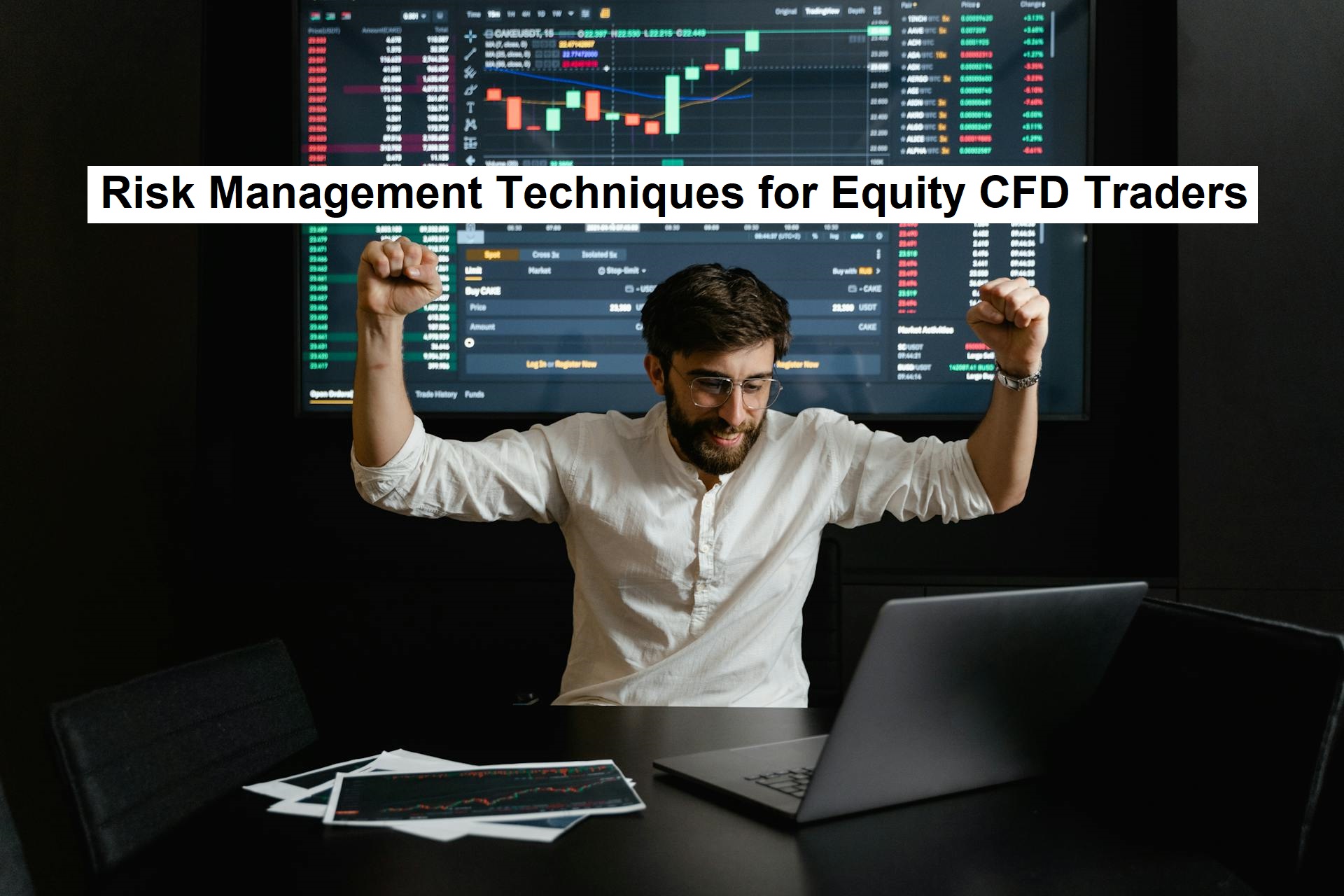Risk Management Techniques for Equity CFD Traders

In the dynamic world of finance, Equity CFD (Contract for Difference) trading has emerged as a popular instrument for investors seeking exposure to the stock market without owning the underlying assets. However, with the potential for high returns comes inherent risks, making effective risk management crucial for traders. This article delves into various risk management techniques explicitly tailored for Equity CFD traders, aiming to empower them with the knowledge and strategies necessary for successful and sustainable trading endeavours.
Understanding Equity CFD Trading
Equity CFDs are derivative products that enable traders to speculate on the price movements of stocks without actually owning them. Instead, traders establish a contract with a broker, agreeing to exchange the difference in the price of the underlying asset from the time the contract is opened to when it is closed.
Equity CFDs offer several distinct features, including leverage, flexibility in trading both long and short positions, and the ability to trade a wide range of underlying assets across global markets. However, it is essential to understand that leverage amplifies both potential profits and losses, increasing the importance of robust risk management strategies.
While Equity CFD trading offers opportunities for significant profits due to leverage, it also exposes traders to heightened risks, including market volatility, overnight financing costs, and the potential for rapid losses. Effective risk management techniques are essential for mitigating these risks and preserving capital.
The Significance of Risk Management
In trading, risk is an inherent component, and managing it effectively is crucial for long-term success. By controlling risk, traders can protect their capital, minimise losses during adverse market conditions, and maintain consistency in their trading performance.
Equity CFD trading presents various risks, including market risk (fluctuations in asset prices), leverage risk (amplified losses due to leverage), liquidity risk (difficulty in executing trades at desired prices), and counterparty risk (risk of broker default). Understanding and addressing these risks are essential for effective risk management.
Failure to implement sound risk management practices can have severe consequences for traders, including significant financial losses, emotional stress, and even the loss of confidence in one’s trading abilities. By prioritising risk management, traders can safeguard themselves against such adverse outcomes.
Fundamental Risk Management Principles
Before initiating any trade, it is essential for traders to define their objectives, including profit targets, risk tolerance levels, and time horizons. Clear goals provide a framework for making informed trading decisions and help traders stay disciplined amidst market fluctuations.
Understanding and accepting personal risk tolerance is crucial for determining the appropriate position size for each trade. By adhering to position sizing rules based on risk tolerance and account size, traders can limit exposure to potential losses and preserve capital over the long term.
Stop loss orders and take profit levels are essential tools for managing risk and optimising trade outcomes. Stop loss orders enable traders to set predefined exit points to limit losses, while take profit levels allows them to lock in profits at predetermined price targets, reducing the impact of emotions on trading decisions. To choose your price targets effectively, study historical price charts like the Nio stock price carefully.
Advanced Risk Management Techniques
Hedging involves opening positions to offset the risk associated with existing trades. Equity CFD traders can hedge their exposure by entering opposite positions or using derivative instruments such as options and futures to protect against adverse price movements.
Scaling in involves gradually increasing position sizes as a trade moves in the desired direction while scaling out entails reducing position sizes to lock in profits or limit losses. These techniques allow traders to manage risk dynamically and optimise trade outcomes based on market conditions.
Trailing stops automatically adjust stop loss levels as the price moves in the trader’s favour, thereby locking in profits while allowing for potential upside gains. Trailing stops help traders capture trends effectively while protecting against sudden reversals in price.
Read: 10 Tips Before Investing in Real Estate
Psychological Aspects of Risk Management
Fear of missing out (FOMO) and the desire to potentially maximise profits can tempt traders to deviate from their risk management plans and take excessive risks. By cultivating a mindset of patience, discipline, and resilience, traders can overcome fear and greed and make rational, objective decisions.
Consistency is critical to successful trading, and maintaining discipline in following a predefined trading plan is essential for achieving long-term profitability. By sticking to established risk management rules and avoiding impulsive actions, traders can build confidence and trust in their trading strategies.
Risk Management Tools and Resources
Risk management calculators help traders calculate position sizes, risk per trade, and potential reward-to-risk ratios based on their account size and risk tolerance. By using these tools, traders can make more informed decisions and manage risk effectively.
Keeping a trading journal allows traders to record and analyse their trades, including entry and exit points, trade rationale, and outcomes. By reviewing past trades and tracking performance metrics, traders can identify strengths and weaknesses in their trading strategies and make necessary adjustments to improve their risk management practices.
Conclusion
Effective risk management is essential for success in Equity CFD trading, as it allows traders to protect their capital, minimise losses, and achieve consistent profitability over the long term. By understanding the risks associated with trading, implementing sound risk management principles and techniques, and prioritising psychological discipline, traders can navigate the complexities of the market with confidence and resilience.



